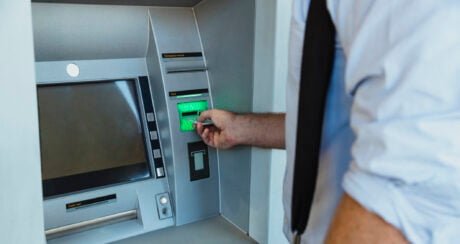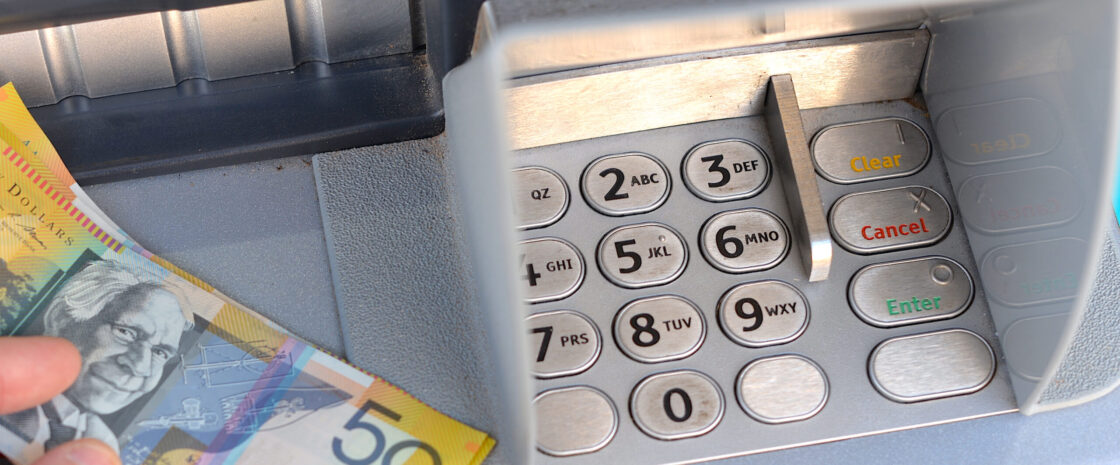Credit cards are a convenient way to pay, but sometimes cash is necessary. It’s possible to withdraw money from a credit card, but it’ll cost you.
Should you withdraw cash from your credit card?
You can use your credit card to withdraw cash, but that doesn’t mean you should. Whether it’s because you only have your credit card on you, you’ve moved your money into a savings account or you’re short on funds, taking out cash from your credit card comes at a cost.
It’s called a cash advance when you use your credit card to withdraw cash from an ATM or transfer funds online from your credit to the debit account.
There are two critical things to watch out for regarding cash advances:
- Fees. Cash advances typically incur a cash advance fee, usually 3% of the value of the transaction. Plus, expect other credit card fees — like ATM charges.
- Interest. Cash advances are usually subject to a different, generally higher interest rate than those incurred on purchases. Unlike standard credit card transactions, cash advances do not have an interest-free grace period.
For example, if you withdraw or transfer $300 from your credit card, you’ll pay a $9 fee. The lender will also start calculating interest the day you withdraw the money until you pay it off. So, if your interest rate is 20%, that $300 cash advance might add up to much more than the $9 fee.
How to get cash from a credit card
There are a few ways to get cash from your credit card.
ATM withdrawal
The process for taking out cash at an ATM with your credit card is the same as a debit card. You can also withdraw money at the point of sale, too.
Be aware that some ATMs also charge an additional fee if a different bank operates it. For example, if you’re a Bankwest customer and withdraw from a non-Bankwest or CommBank ATM, there could be an extra fee.
Online transfer
In your online banking, select to transfer money from your credit card into your everyday account — as you would typically move funds between accounts. When you confirm the transfer, the bank will notify you that the transaction is a cash advance.
Westpac, for example, states, ‘A fee of 3% may apply to each cash advance from your credit card. If you’re using a corporate card, you may be charged a different fee.’
What to consider before using a cash advance
Using your credit card to take out money is handy if you need to access a small amount of cash (for example, $300). If you don’t usually carry cash, aren’t able to use your credit card overseas or have moved your everyday money into a savings account you can’t touch, you can use your credit card to withdraw some money.
The trade-offs, however, might not be worth it. There is a higher interest rate than associated with a standard purchase and no interest-free period. You’ll end up paying more for the same product or service than paying on your debit card or using cash withdrawn from savings.
Alternatives
While these options might be less convenient, you can consider a few alternatives.
- Ask if you can pay on your credit card without withdrawing money (if it’s an in-person purchase).
- Wait until your next payday and use your debit card.
- Ask a friend or family member to borrow the money you need.
- Look into buy now, pay later (BNPL) services.
- If it’s not urgent, sleep on it. Use the 24-hour rule — wait until the next day to see if you still want or need it.
- Build up a separate emergency fund to take from when you need cash.
» MORE: Need money now? 16 ways to find fast cash
Frequently asked questions about credit card cash withdrawals
Withdrawing cash from an ATM using your credit card shouldn’t be your first option because credit card withdrawals come at a cost. A cash advance rate is higher than the standard purchase rate on a credit card, and there is no interest-free period for cash advances.
Cash advances are like any other credit card transaction — your credit report will reflect your credit card debt, not specific transactions. However, falling behind on your credit card repayments can negatively affect your credit score.
Cash limits may apply. Check with your bank. Generally, the maximum cash advance depends on your available credit and the card’s daily withdrawal limit. CommBank, for example, sets a maximum daily limit of $2,000.
DIVE EVEN DEEPER

Guide To Making Credit Card Payments
When you make a credit card payment, you’re repaying what you owe. You can pay off the entire balance or make a partial or minimum payment.

What to Know About Card Skimmers
A card skimmer is a device used to steal payment information at ATMs, EFTPOS terminals and other places you’d use a debit or credit card.

Can You BPAY With A Credit Card?
You can make BPAY payments from a credit card as long as the biller accepts payments and you provider offers the option.

Can You Pay the ATO By Credit Card?
You can pay the ATO by credit card — there are even ways to earn rewards points. Fees for ATO credit card payments range from 0.72% – 1.99%.

